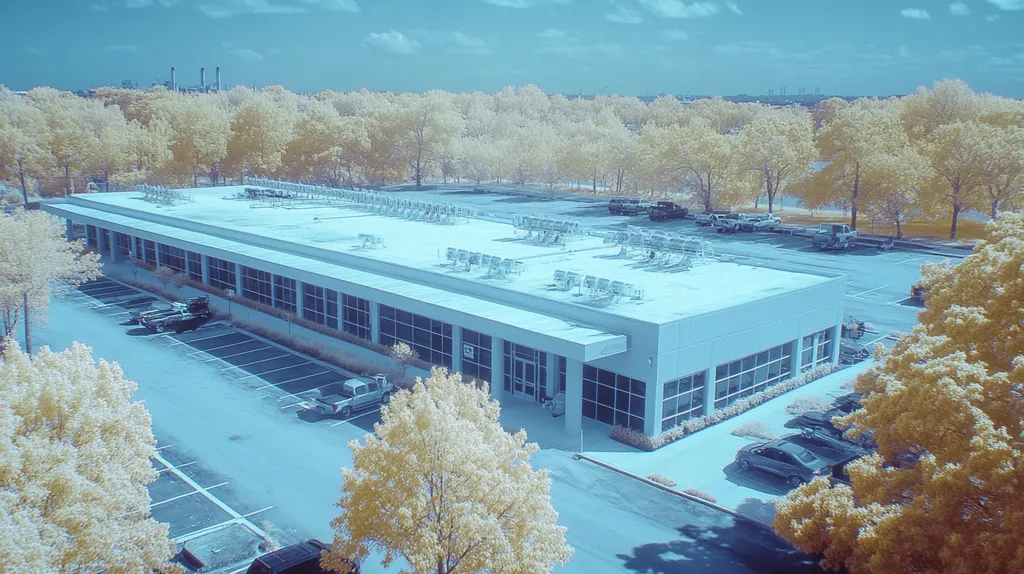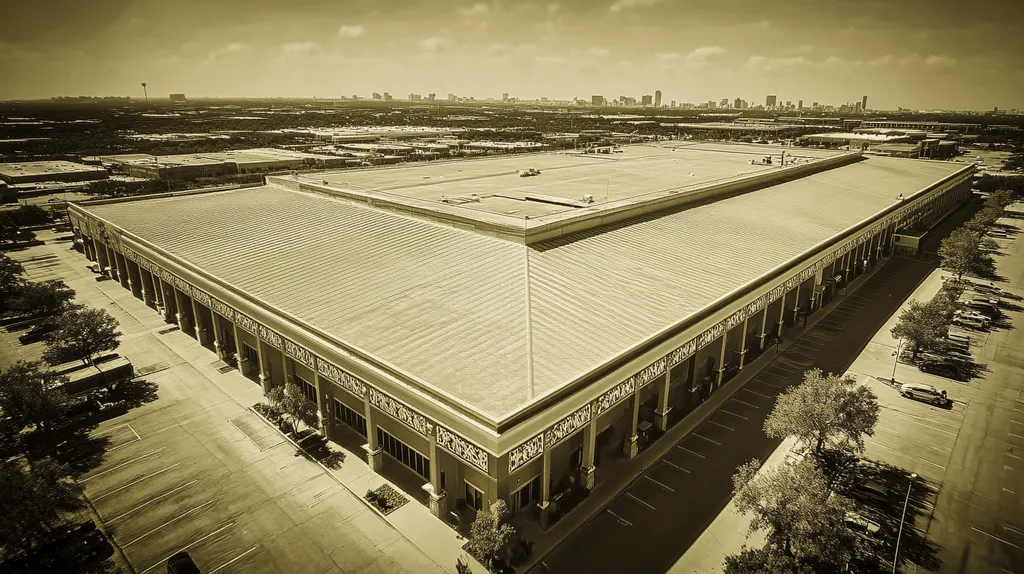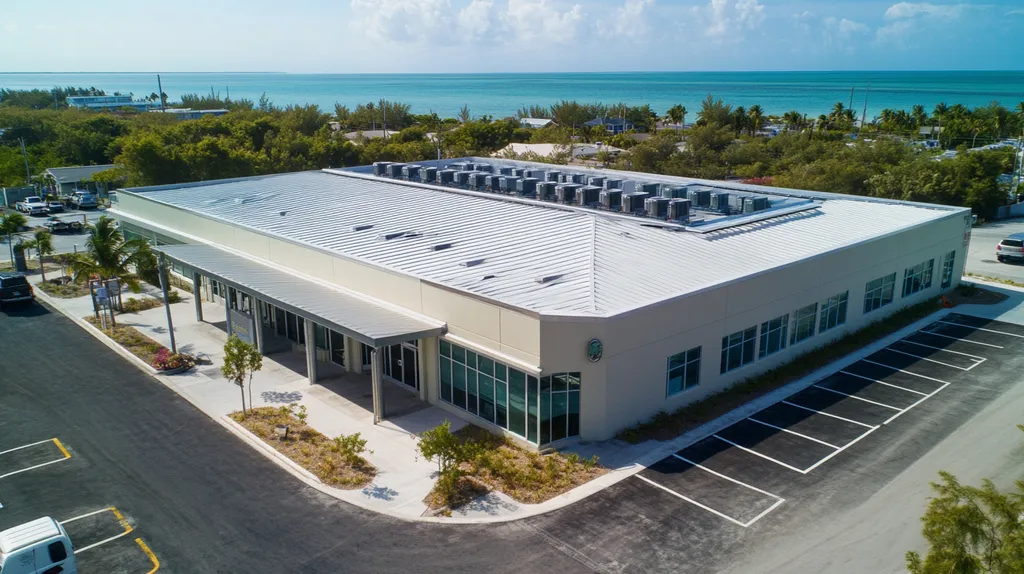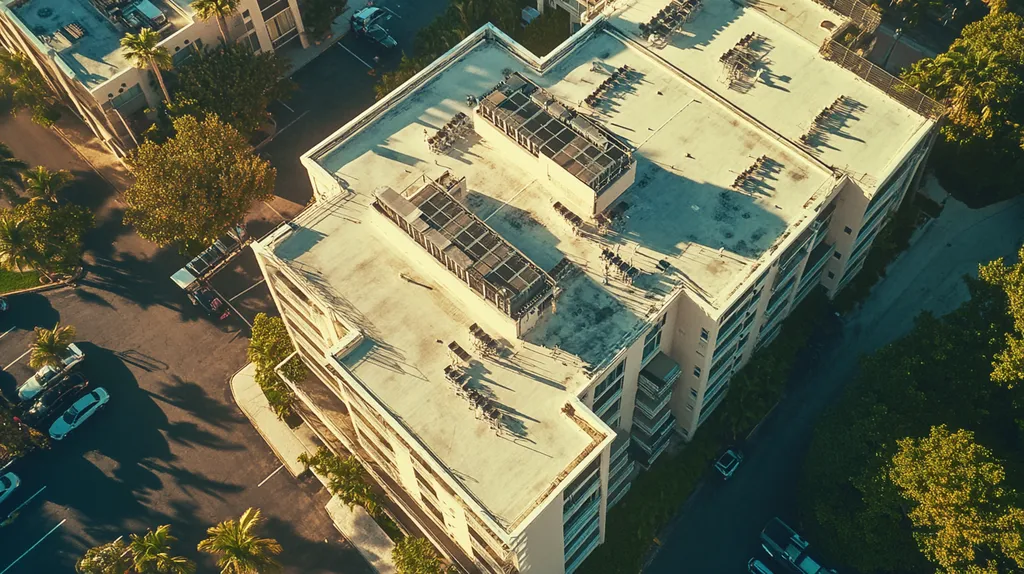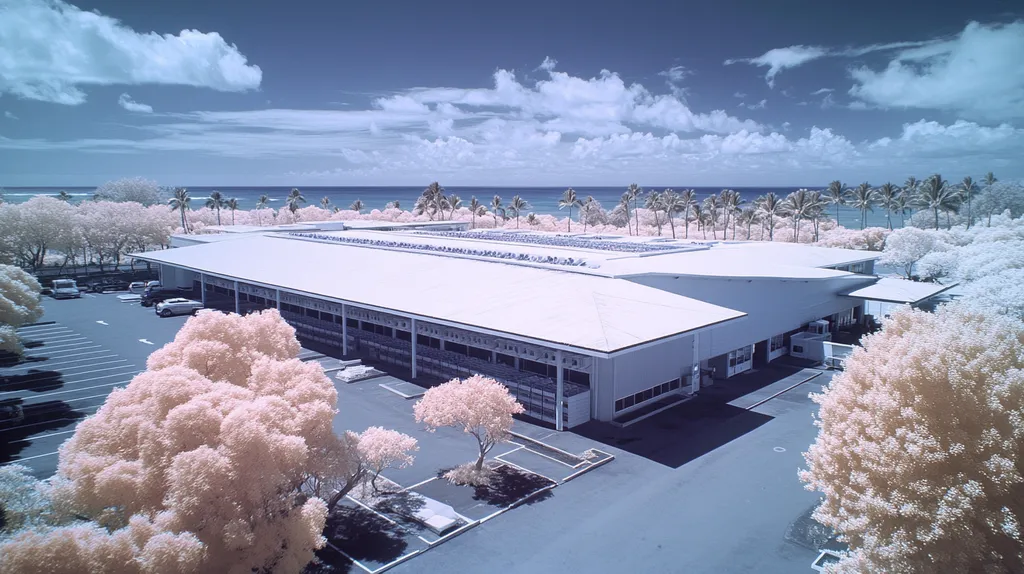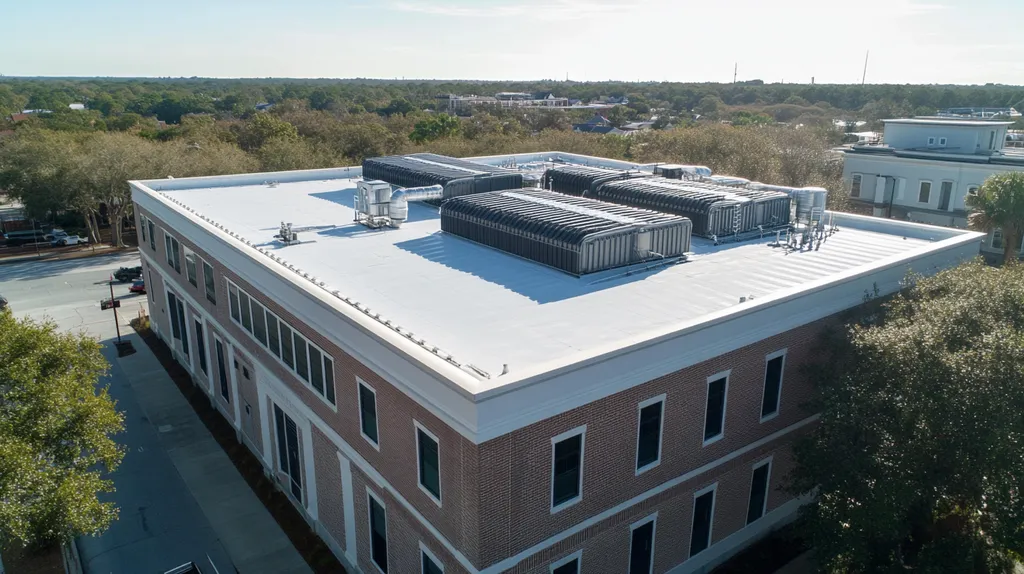In 2023, industrial facilities faced over $127 million in EPA fines for roofing-related environmental violations, with outdated materials and improper installation methods leading to watershed contamination and toxic emissions.
As regulations grow increasingly complex, facility managers must navigate a maze of requirements covering everything from material selection to stormwater management and worker safety protocols.
This comprehensive guide examines the critical environmental regulations shaping modern industrial roofing, providing actionable strategies for maintaining compliance while optimizing performance and cost-effectiveness.
SECTION 1: FUNDAMENTAL CONCEPTS
In today’s complex regulatory landscape, understanding environmental requirements for industrial roofing materials has become more critical than ever. With increasing scrutiny on construction emissions and stricter enforcement of safety standards, facility managers face mounting pressure to ensure compliance while maintaining cost-effectiveness. The stakes are high – violations can result in operations shutdowns, substantial fines, and damage to corporate reputation. This section examines the essential regulatory framework that shapes modern industrial roofing decisions.
Overview of EPA Regulations
The EPA’s regulatory framework for industrial roofing extends beyond basic material standards to encompass the entire lifecycle of roofing products. Recent initiatives through the Construction Material Opportunities to Reduce Emissions (C-MORE) program demonstrate the agency’s expanding focus on environmental impact.
This program specifically targets the development of low embodied carbon construction materials, offering grants to manufacturers who create more sustainable roofing solutions. The initiative aims to help U.S. manufacturers lower both operating costs and emissions while maintaining structural integrity. (source: U.S. Environmental Protection Agency)
Compliance requirements now include detailed documentation of material composition, emissions during installation, and end-of-life disposal protocols. These regulations affect everything from material selection to installation procedures.
Forward-thinking facility managers can leverage these requirements to secure tax incentives and grants while demonstrating environmental leadership. Understanding these regulations helps optimize both compliance and cost-effectiveness.
Hazardous Air Pollutants (HAPs) in Roofing
HAPs represent a significant concern in industrial roofing, with particular attention paid to emissions during installation and throughout the material’s lifespan. Common roofing adhesives, sealants, and coatings can release these harmful compounds into the atmosphere.
The EPA maintains strict guidelines for HAP emissions, requiring regular monitoring and reporting. Facilities must track both direct emissions from roofing materials and secondary emissions from maintenance activities.
Modern roofing solutions increasingly incorporate low-HAP or HAP-free alternatives that maintain performance while reducing environmental impact. These innovations often command premium prices but offer long-term benefits through reduced monitoring requirements and improved worker safety.
Facility managers must balance immediate costs against potential liability and compliance requirements when selecting roofing materials. Documentation of HAP levels becomes crucial for both regulatory compliance and risk management.
Asbestos and Its Implications
Despite decades of regulation, asbestos remains a persistent challenge in industrial roofing, particularly during renovation and demolition projects. Many facilities built before 1980 contain asbestos-containing materials (ACM) in their roofing systems.
Current regulations require comprehensive testing before any roof work begins on older structures. Detection of ACM triggers specific handling protocols and disposal requirements that significantly impact project timelines and costs.
Building owners must maintain detailed records of asbestos testing, abatement procedures, and disposal documentation. These records become critical during property transactions and regulatory inspections.
Professional asbestos surveys and management plans protect both worker safety and corporate liability. Modern replacement materials offer superior performance without the health risks associated with asbestos.
SECTION 2: SYSTEM COMPONENTS
Environmental compliance for industrial roofing has become increasingly complex, with regulatory violations costing facilities an average of $200,000 in fines annually. Beyond financial penalties, non-compliant roofing systems can lead to structural damage, environmental harm, and operational disruptions. Understanding these critical system components helps facility managers navigate regulations while protecting both their buildings and bottom line.
Effluent Guidelines for Asphalt Products
Asphalt roofing materials require careful consideration due to their potential environmental impact through water runoff. Modern facilities must implement capture and containment systems to prevent contaminated discharge from entering watersheds.
Temperature monitoring and proper storage become essential, as heat can accelerate the release of harmful compounds. Facilities should maintain detailed logs of material storage conditions and implement emergency containment procedures.
Regular testing of runoff helps identify potential issues before they become regulatory violations. This proactive approach allows facilities to address problems early while demonstrating commitment to environmental stewardship.
Proper disposal of asphalt materials during repairs or replacement requires specialized handling. Working with certified waste management partners ensures compliance while protecting against future liability.
National Emission Standards for Hazardous Air Pollutants (NESHAP)
NESHAP guidelines specifically target emissions during roofing installation and maintenance activities. Facilities must monitor and document air quality impacts throughout the roof’s lifecycle, from initial application to eventual replacement.
Modern low-emission roofing systems offer superior environmental performance while maintaining durability. These systems often incorporate advanced polymers and cool-roof technologies that reduce both emissions and energy consumption.
Worker safety protocols must address potential exposure during installation and maintenance. This includes proper ventilation, protective equipment, and emergency response procedures for chemical spills or releases.
Documentation requirements include detailed emissions monitoring reports and maintenance records. These records prove essential during regulatory inspections and facility audits.
Stormwater Management Systems
Industrial roofs must effectively manage increasing precipitation loads while preventing contaminated runoff. Modern stormwater systems incorporate multiple layers of filtration and retention to protect local water sources.
Regular inspection and maintenance of drainage systems prevents catastrophic failures. Facilities should establish clear protocols for cleaning gutters, testing water quality, and documenting system performance.
Green infrastructure solutions like vegetated roofs and retention basins offer dual benefits. These systems reduce stormwater runoff while creating additional environmental benefits such as reduced urban heat island effect.
Emergency response plans must address extreme weather events and system failures. This includes backup drainage systems and procedures for managing contaminated overflow during major storms.
Integration with facility-wide water management systems optimizes performance. Modern monitoring technology allows real-time tracking of water flow and quality metrics.
SECTION 3: IMPLEMENTATION METHODS
Industrial roofing compliance violations cost U.S. facilities over $31.8 million in fines during 2022 alone. Beyond financial penalties, improper implementation of environmental regulations can lead to devastating environmental damage, worker health issues, and facility shutdowns. Understanding and executing proper implementation methods isn’t just about following rules – it’s about protecting your facility’s future while safeguarding both people and planet.
Compliance with NESHAP Regulations
NESHAP compliance begins with comprehensive material testing and documentation. Every roofing project must start with a thorough assessment of existing materials and potential emission sources.
Facility managers must establish clear protocols for monitoring emissions during installation and maintenance. This includes real-time air quality monitoring, proper ventilation systems, and emergency response procedures.
Training requirements demand special attention, as workers must understand both technical procedures and safety protocols. Regular certification updates and documented training sessions protect both workers and facilities from compliance violations.
Documentation serves as your facility’s shield against regulatory challenges. Maintain detailed records of all testing, monitoring, and maintenance activities, including dates, personnel involved, and specific actions taken.
Implementing Stormwater Pollution Prevention Plans (SWPPP)
Effective SWPPP implementation requires a systematic approach to water management. Start by mapping all drainage patterns and identifying potential contamination points across your roofing system.
Design your prevention strategy around the specific challenges of your facility. This includes selecting appropriate filtration systems, establishing maintenance schedules, and installing monitoring equipment at key discharge points.
Regular inspections become your first line of defense against violations. Create a detailed inspection calendar that accounts for seasonal changes and extreme weather events.
Train your maintenance team to recognize early warning signs of system failure. Quick response to minor issues prevents major environmental incidents and costly regulatory violations.
Document every aspect of your SWPPP implementation. Keep detailed records of inspections, maintenance activities, and any corrective actions taken.
Best Practices for Asbestos Removal
Safe asbestos removal starts with thorough testing and containment planning. Engage certified inspectors to conduct comprehensive surveys before any renovation or demolition work begins.
Establish strict containment zones using negative air pressure systems and proper sealing techniques. These measures prevent asbestos fiber migration during removal activities.
Worker protection requires specialized equipment and monitoring protocols. Ensure all personnel have proper respiratory protection, protective clothing, and decontamination facilities.
Transport and disposal demand careful attention to chain-of-custody documentation. Work only with certified disposal facilities and maintain detailed records of all material movements.
Post-removal testing provides crucial verification of successful abatement. Conduct thorough air quality testing before allowing normal operations to resume in affected areas.
SECTION 4: MAINTENANCE REQUIREMENTS
Industrial roof maintenance violations resulted in over $42 million in EPA fines during 2022, with inadequate inspection programs being the leading cause. Beyond financial penalties, poor maintenance leads to accelerated material degradation, increased toxic emissions, and potential environmental contamination. Modern maintenance requirements now extend far beyond traditional repairs to encompass sophisticated environmental monitoring, water quality management, and enhanced worker safety protocols.
Regular Inspections and Monitoring
The EPA’s NESHAP regulations require facilities to implement comprehensive inspection programs that monitor both visible deterioration and potential emission sources. Major sources, defined as those emitting 10 tons or more of a single toxic air pollutant annually, face particularly stringent oversight requirements. (source: U.S. Environmental Protection Agency)
Core inspection protocols must address three critical areas: surface integrity, drainage system functionality, and emission control systems. Each component requires specific documentation, including photographic evidence and detailed condition assessments.
Modern monitoring should incorporate both manual inspections and automated sensor systems. These technologies can detect moisture infiltration, chemical emissions, and structural stress before they become visible problems.
Documentation must include time-stamped inspection reports, corrective action records, and ongoing monitoring data. This comprehensive record-keeping proves essential during regulatory audits and helps track deterioration patterns.
Wastewater Management Practices
Modern wastewater management requires a three-tiered approach: prevention, containment, and treatment. Prevention focuses on selecting low-leaching materials and maintaining proper drainage slopes to minimize contaminant accumulation.
Containment systems must include both primary and secondary measures. Primary systems capture normal runoff, while secondary containment handles overflow during extreme weather events or system failures.
Treatment protocols should address both visible contaminants and dissolved pollutants. This includes filtering systems for particulates and chemical treatment for dissolved compounds that could harm local watersheds.
Regular water quality testing becomes essential, with samples taken at multiple collection points. Results must be documented and compared against baseline measurements to identify developing issues.
Maintenance of Fall Protection Equipment
Fall protection maintenance extends beyond basic equipment checks to include comprehensive system evaluation. This encompasses anchor points, lifelines, and the structural integrity of mounting points.
Monthly inspections must verify proper operation of all mechanical components. This includes testing retraction mechanisms, checking for fiber degradation in synthetic materials, and examining connection points for wear.
Environmental exposure tracking helps predict equipment degradation rates. UV exposure, chemical exposure, and temperature fluctuations all impact equipment lifespan and performance.
Certification records must be maintained for all components, including installation dates, inspection history, and replacement schedules. These records protect both worker safety and facility liability.
Emergency rescue equipment requires separate maintenance protocols and regular testing. This includes ensuring proper function of self-rescue devices and maintaining clear access to emergency exit points.
SECTION 5: PERFORMANCE METRICS
Industrial roofing violations resulted in over $127 million in EPA fines during 2023, with inadequate performance monitoring being the primary culprit. Modern facilities face unprecedented scrutiny of their roofing systems’ environmental impact, from emissions tracking to stormwater management. Without robust metrics and documentation, facilities risk substantial penalties, operational shutdowns, and lasting environmental damage.
Measuring Emissions Reduction
Industrial facilities must implement comprehensive emissions monitoring systems that track both point-source and fugitive emissions from roofing materials. Real-time monitoring through advanced sensor networks helps identify problems before they trigger regulatory violations.
Baseline measurements establish critical performance benchmarks for ongoing compliance. Regular testing should document emissions levels during different weather conditions and operational states to build a complete environmental impact profile.
EPDM roofing membranes offer superior emissions control through their resistance to UV radiation, temperature variations, and chemical agents. Available in both black and white options, these materials allow facilities to optimize both emissions reduction and energy efficiency goals. (source: H Proofing Pro)
Documentation must include detailed emissions logs, testing protocols, and corrective actions taken. This comprehensive record-keeping proves essential during regulatory inspections and helps identify emerging compliance issues.
Assessing Stormwater Quality
Modern stormwater quality assessment requires continuous monitoring through strategically placed sampling points. These systems must track both chemical composition and particulate levels in roof runoff.
Automated monitoring equipment should measure pH levels, total suspended solids, and chemical concentrations. Regular calibration and maintenance of testing equipment ensures accurate data collection for compliance reporting.
Integration with facility-wide water management systems optimizes performance tracking. Real-time alerts notify maintenance teams when quality metrics approach regulatory thresholds.
Documentation must include sampling results, equipment maintenance records, and corrective measures implemented. This data supports both compliance verification and system optimization efforts.
Evaluating Asbestos Handling Compliance
Asbestos compliance metrics must address both material handling and air quality monitoring. Regular fiber counts in work areas verify containment effectiveness during remediation activities.
Personal exposure monitoring tracks worker safety compliance through specialized equipment. These measurements help optimize protective equipment requirements and work protocols.
Chain-of-custody documentation ensures proper tracking from identification through disposal. Clear protocols for sampling, labeling, and transport prevent costly compliance violations.
Third-party verification provides crucial validation of internal compliance efforts. Independent testing helps identify potential issues before they trigger regulatory action.
Performance records must include all testing results, worker certifications, and disposal documentation. This comprehensive approach protects both worker safety and facility compliance.
SECTION 6: OPTIMIZATION STRATEGIES
In 2023, industrial facilities paid over $157 million in EPA fines for roofing-related environmental violations, with outdated optimization strategies being the leading cause. Modern regulations demand increasingly sophisticated approaches to stormwater management, worker safety, and material selection. Without proper optimization, facilities risk not only substantial penalties but also long-term environmental damage and workplace injuries that can permanently impact operations.
Adopting Advanced Stormwater Treatment Technologies
Smart stormwater management systems represent the new frontier in regulatory compliance. These systems combine real-time monitoring with automated treatment protocols to ensure consistent water quality regardless of weather conditions.
Bioretention systems integrated into roofing structures provide natural filtration while reducing peak flow rates. These systems can remove up to 90% of common pollutants while creating valuable green space.
Advanced filtration technologies now incorporate self-cleaning mechanisms and predictive maintenance alerts. This automation reduces maintenance costs while ensuring consistent compliance with increasingly strict water quality standards.
The EPA’s Construction Material Opportunities to Reduce Emissions (C-MORE) program now offers grants for facilities implementing advanced stormwater treatment solutions that incorporate low embodied carbon materials. These initiatives help offset implementation costs while promoting environmental leadership. (source: U.S. Environmental Protection Agency)
Enhancing Fall Protection Training Programs
Modern fall protection training must extend beyond basic safety protocols to address environmental compliance. Workers need comprehensive understanding of how their activities impact emissions and water quality.
Virtual reality training platforms allow workers to practice complex procedures in safe environments. These systems can simulate various weather conditions and emergency scenarios while tracking performance metrics.
Regular certification updates ensure workers stay current with evolving regulations. Training programs should incorporate quarterly reviews of environmental compliance procedures alongside traditional safety protocols.
Documentation systems must track both individual certifications and overall program effectiveness. Modern tracking platforms integrate training records with incident reports to identify areas needing additional focus.
Integrating Sustainable Roofing Materials
Material selection now requires balancing immediate performance needs against long-term environmental impact. Modern sustainable materials offer superior durability while minimizing emissions and chemical leaching.
Cool roof technologies incorporate advanced polymers that reflect solar radiation while maintaining structural integrity. These materials reduce both energy consumption and urban heat island effects.
Recycled content materials provide excellent performance while supporting circular economy initiatives. Many manufacturers now offer take-back programs that ensure proper end-of-life material handling.
Installation protocols for sustainable materials must address both worker safety and environmental protection. Proper techniques minimize waste while ensuring optimal performance throughout the material’s lifecycle.
Regular monitoring helps verify that sustainable materials maintain their environmental benefits over time. This includes tracking reflectivity, chemical emissions, and structural integrity through automated sensor systems.
Looking Ahead
With EPA fines for roofing violations exceeding $127 million in 2023, the stakes for proper environmental compliance have never been higher.
The intersection of evolving regulations, advanced materials technology, and enhanced monitoring systems demands a comprehensive approach to industrial roofing management.
Successful facilities will embrace automated monitoring systems, sustainable materials, and enhanced training protocols to stay ahead of compliance requirements.
The future of industrial roofing lies in smart integration of environmental protection with operational efficiency, as regulations continue to tighten and enforcement becomes more stringent.
Those who fail to adapt risk not only substantial penalties but also long-term environmental damage and permanent operational disruptions that can devastate their bottom line.
FREQUENTLY ASKED QUESTIONS
Q. What are the fundamental environmental regulations for commercial roofs?
A. Environmental regulations for commercial roofs encompass various requirements, including emission tracking and material documentation. The EPA’s initiatives, such as the C-MORE program, encourage sustainable practices, targeting lower carbon materials to help facilities reduce both costs and environmental impacts. Being aware of these regulations supports compliance and enhances operational efficiency.
Q. How do industrial roofs manage hazardous air pollutants?
A. Managing hazardous air pollutants in industrial roofs involves selecting low-HAP materials and monitoring emissions during installation. Facilities must maintain comprehensive documentation to comply with regulations and track both direct and secondary emissions. Utilizing safer alternatives can minimize health risks and ensure ongoing compliance with environmental standards.
Q. What are the key components of environmental compliance for industrial roofs?
A. Key components include proper effluent management, emissions control, and stormwater systems. Facilities should implement strategies to capture and treat runoff, monitor emissions effectively, and conduct regular inspections. Understanding these elements prevents costly violations and enhances environmental safety while protecting your property.
Q. How can I ensure compliance during roof maintenance?
A. To ensure compliance during roof maintenance, implement a thorough inspection program that covers integrity, drainage, and emission systems. Regular monitoring, documentation of findings, and promptly addressing identified issues help meet regulatory standards. Training maintenance staff on protocols further enhances compliance and safety.
Q. What performance metrics should I track for industrial roofs?
A. Essential performance metrics include emissions levels, stormwater quality, and asbestos handling compliance. Regular monitoring and documenting these metrics assist in identifying potential compliance issues before they escalate. Establishing baselines helps track improvements and maintain regulatory adherence, safeguarding your facility’s integrity.
Q. What are the benefits of optimizing roofing strategies?
A. Optimizing roofing strategies enhances compliance with environmental regulations and improves long-term sustainability. By utilizing advanced materials and innovative technologies, facilities can reduce emissions and increase energy efficiency. Furthermore, effective optimization minimizes fines and protects overall asset value, ensuring the future viability of your property.
Q. How can I prepare for an environmental inspection?
A. Preparing for an environmental inspection involves thorough documentation of compliance efforts, including maintenance records, material certifications, and inspection logs. Conducting a pre-inspection walkthrough helps identify potential issues and ensures all staff are aware of protocols. Being proactive reduces the risk of violations and facilitates smoother inspections.

